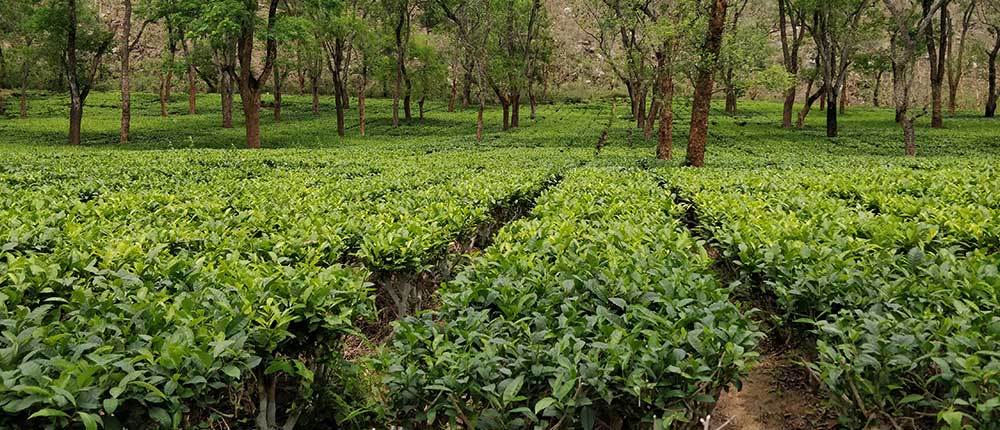TERI is working in Assam to reengineer plant root-associated microbes to make tea cultivation more resistant to biotic and abiotic challenges

Tea is the most widely consumed non-alcoholic, caffeinated beverage in the world (Gupta et al 2012). The tea industry is a major foreign exchange earner for India besides being a source of income for lakhs of workers (www.teaboard.gov.in). Of India’s total tea production, Assam accounts for over 50% (www.teaboard.gov.in). However, tea cultivation is severely affected by both biotic (bacterial, fungal and insect pests) and abiotic (drought, extreme temperatures, heavy metals, waterlogging, etc.) stresses, apart from soil nutrient deficiency. Developing a low-cost, efficient and sustainable approach for abiotic stress management is the need of the hour for the tea industry. Scientists from all major tea producing countries are today trying to develop strategies to cope with abiotic stress. They are trying measures such as screening of available tea plant collections (germplasms) for selection of abiotic and biotic stress tolerant varieties, breeding for enhanced water use efficiency, use of certain chemicals, etc.
Plant root associated microbes (microbiomes) play a key role in maintaining a plant’s health in any situation. Understanding the dynamics and functional benefit sharing between a plant and its associated microbes will enable scientists to manipulate rhizosphere (the region near the root which has direct influence on plant health) to manage abiotic stresses. At TERI-NE centre, research is being undertaken to understand how tea plant-associated microbes – i.e. the millions of micro-organisms that reside in the soil and plants, like those in the human gut, could be key to sustainable tea cultivation. Understanding tea root associated microbes and the endophytes (microbes that live in harmony within plant roots) will help us develop a library of culturable microbes with predicted functional properties and interaction with the tea plant. The aim is to be able to re-construct the synthetic rhizopheric community which can used to improve water use efficiency, nutrient management and tolerance to climate change. Different sets of genomic/metagenomic, transcriptomic/metatranscriptomic and microbiological techniques are being used to understand and improve tea cultivation. We have identified the genes which are expressed in tolerant tea genotype in response to drought but whether tea root associated microbes have any role towards influencing this expression is yet to be deciphered.
Furthermore, with the help of metagenomic techniques we have analysed the bacterial species associated with bulk soil, rhizosphere soil and root endophytes of tea plantations with a history of drought. The hypothesis is that the tea plants in areas affected by drought for the last 20-25 years have habitat specific, underground microbial communities that may have acquired evolutionarily adaptive traits responding to water limiting conditions and help the host tea plant sustain and grow even if there is a water deficit. This specialised, drought stressed, root associated microbes will be different from the microbiome of tea plant growing in normal unstressed tea rhizosphere. With this aim, we studied the diversity of drought affected tea rhizospheres and root endophytes using DNA marker 16S rDNA. Surprisingly, we found that 80% of the tea rhizosphere and 54% of the tea root endophyte were unclassified and probably belong to the unculturable group. These micobes are unculturable not because they can never be cultured in a lab, but because of our inability to predict their metabolic needs.
We firmly believe that an intelligent tweaking of the tea plant microbiome could lead to a network of microbes, which in partnership with the tea plant genome, will give rise to a sufficiently able hologenome (the sum total of host genome plus associated microbial genome) that will robustly increase the yield, protect against abiotic and biotic stresses and thus lead to sustainable tea cultivation.
